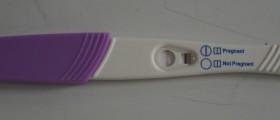
A very common problem
One of the most distressing conditions in women is infertility. It is defined as a woman’s inability to conceive a pregnancy within a year even though she has unprotected sexual intercourse. Primary infertility occurs when a woman cannot stay pregnant for the first time while secondary infertility happens when a woman cannot conceive a pregnancy although she was pregnant earlier. There are many reasons for the infertility in women. One of the causes responsible for this condition is the blockage in the fallopian tube.
Each month the ovaries produce eggs. One egg is released in ovulation into the fallopian tube in order to be fertilized and then implanted into the wall of the uterus. When the fallopian tube is blocked, a woman cannot stay pregnant. In the majority of cases, the blockage of the fallopian tubes is caused by pelvic inflammatory disease. Fortunately, there are many ways to fix the fallopian tubal blockage, but they usually require a surgery.
Surgeries for blocked fallopian tubes
Nowadays, women who developed fallopian tube blockage usually opt for one of three types of reconstructive tubal surgery. When the blockage is removed, then they may try to conceive a pregnancy naturally. There are three types of surgeries for fixing the blocked fallopian tubes and those are tubal anastomosis, microsurgical tubal implantation and fimbriectomy reversal.
In tubal anastomosis, first the blocked ends of the fallopian tube are opened. Afterwards, through the tubes cavities, the surgeon treads a narrow and flexible stent. All the time, the fallopian tubes should be opened from the uterine cavity to the fimbrial end, which is near the ovary. When a new opening of the tubes is made, the tubes are drawn towards each other with a retention suture. When the blockage is removed, the surgeon gently withdraws the stent from the fimbrial end.Microsurgical tubal implantation is performed only when the distal portion of the fallopian tubes is available, as well as when there is no proximal opening of the fallopian tubes into the uterus of a woman. In this operation, the surgeon makes a new opening through the muscle of the uterus. Afterwards, the remaining part of the tubes is inserted into the uterine cavity.Fimbriectomy reversal is the surgery in which the surgeon removes fimbrial and infundibular parts of the fallopian tubes. The new opening is made in the remaining end of the blocked fallopian tubes. This procedure is also called microsurgical salpingostomy.
















Your thoughts on this
Loading...